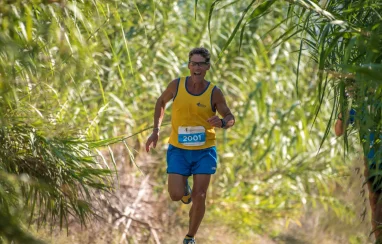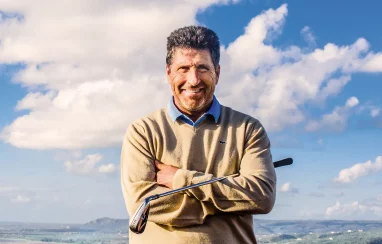By Giorgos Tsiros
Robert Trent Jones Jr. can tell straight away whether a piece of land can be transformed into a beautiful golf course. Meeting with him in a quiet, comfortable corner of Ted’s Lounge, the spectacular clubhouse of the Bay Course, he explained how: it’s metaphysical.
“The physical is obvious. The meta – it’s not. It’s what you feel,” he tells me. “When I came here with the Captain, he told me why he loved the land so much. After we walked to the top of the hill, we went back to Pylos for lunch. He said he was planning a second golf course as well and asked me whether I wanted to build the first one or the most beautiful one. And I said: “The most beautiful.” “Then that’s your land,” he said, and offered me the land he thought was the most beautiful. That was the metaphysical moment.”
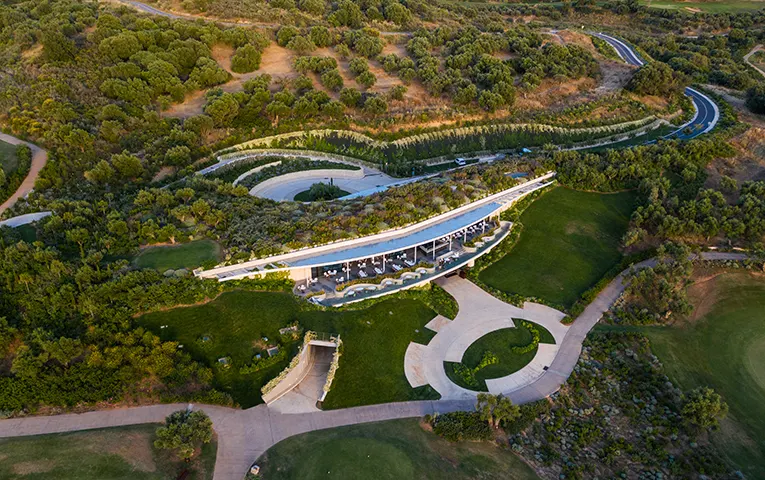
He’s referring, of course, to his first visit to the bay of Navarino, the land that would become the home of Costa Navarino, as a guest of his good friend, Captain Vassilis Constantakopoulos.
The great golf architect – a legend in the world of golf, as was his father – was first introduced to the founder of Costa Navarino in the mid-90s, and they immediately realized that they had more in common than their love for the sport; they shared common values, a sense of honor, and a respect for the environment.
Today, the Navarino bay is home to a one-of-a-kind sustainable destination, and the magnificent Bay Course, designed by Trent Jones, attracts prominent golf players from all over the world every year.
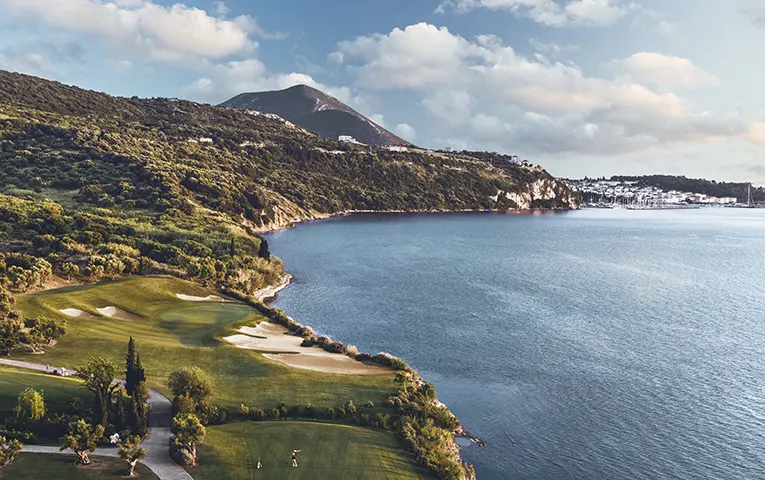
When you started designing The Bay Course, did you have any idea how Costa Navarino would evolve?
I’m a risk-taker, but I’m also able to feel the energy of others. I can feel bad energy, and I stay away from these people. I’ve met people and they had this negative aura, and I never wanted to be close to them. When I met Captain Vassilis, who was a strongly determined self-made man, and then met his whole family, I could feel the beauty, the energy, and the vision involved in what they were doing. So we trusted each other. They trusted that I would deliver, in two years, what I said I would do.
Sustainability is an integral element of your design philosophy. Can you tell me how that works?
Absolutely, and I think I was one of the leaders in this. Every golf course is like an urban or suburban park, and it’s important, given the current rate of urbanization, to our quality of life and the air we breathe.
The broader notion of sustainability is that we have to conserve our natural resources. Everything in nature – water, carbon – is part of a cycle. Oil and coal is a bank of trees from millions of years ago. When you consume the bank and put it up in the air, two things happen: you don’t have a bank and you can’t breathe. Carbon has to stay in the ground. What people don’t realize is that golf courses do their part. Turf-grass is in general 100 times denser than an agricultural crop, and has deeper roots. Therefore, it has much greater nutrient holding capabilities and requires less chemicals. In addition, golf courses are a social benefit to the community, too, as a venue for physical activity.
What’s your approach to designing a new course?
First of all, I think that to design, you have to be a golfer. You have to enjoy the sport. The other thing many people don’t realize is that course architecture is a physical job. You have to walk the land. I design the course first with the soles of my feet. I feel the land, feel nature, where the sun comes up and goes down, how the wind is blowing. And you make a layout and go back to the land again and again to see if it fits.
I’m not looking at sites for greens per se, I’m looking for a sequence of holes that flows. And, of course, there’s the technical aspect to it. People think a golf course is what they see and play on. They don’t understand that it’s under their feet. It’s the soil, the pipes, the soil mechanics, the drainage, which is more important than anything because you want to play on a firm surface. The grass doesn’t grow properly unless this part’s done properly. What you want is a firm, fast surface that’s more fun to play on.
Another important thing about my approach is that I don’t want straight lines, because Mother Nature flows. So why change her?
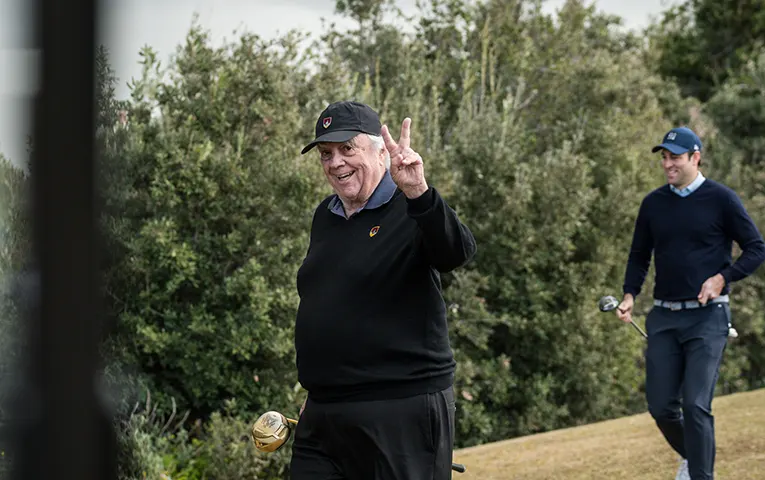
Do you see any prevailing trends that will shape the golf courses of the future?
Everybody’s concerned about speed of play. For young people in particular, mentally, everything is quick. So we’ll probably see courses with fewer holes. Or we might see play in two directions: we could have literally two separate experiences on one piece of land, halving maintenance costs while extending playing time. My feeling is we’ll see courses in places that haven’t had them before, from the deserts of the Arab world to the Arctic Circle.
What makes the sport you dedicated your life to so special?
That’s the big question. Many believe that it’s an elitist game, for the few. But in Scotland, where the game was born, everybody plays. There are many small community golf courses that are inexpensive and important to planting the seeds of golf. And, of course, the younger you learn the game, the better you’ll be at it. I’m 80 years old and I’m playing in a tournament – in what other sport can you do that? Today, it’s an Olympic sport, with the support of countries like Russia and China that didn’t want it in the past because they didn’t have golfers.
You have likened golf to a classical symphony in that it features changes in mood and pace…
Expert golfers will see this differently to me, but I want to offer the pleasure of the game to as many people as possible, because the course needs to have customers. So I think a course should have its own rhythm. Generally speaking, you want to shake hands in the beginning, so it shouldn’t be too difficult, and then, as you go on, you need to be challenged, but at the same time it’s all about the aesthetic; how does it look and how does it feel? To me, beauty is extremely important. I want you to feel this beauty, and to see it in any direction you look.
How has golf shaped your character?
Golf is an ethical sport. Golfers obey the rules. If someone breaks the rules all the time, you don’t want to be with that person, either in business or in your social life. My mother always told me, when we had to wash the dishes or do homework, that we were building character. Golf does that, too. For me, it’s the game of a lifetime. I don’t always play well, and sometimes it drives me crazy that you can never have a perfect game, but you keep trying. You have to be tactical, and to control your emotions, to remain balanced, emotion-wise, especially when you’re playing competitively. It takes a lot of practice.
